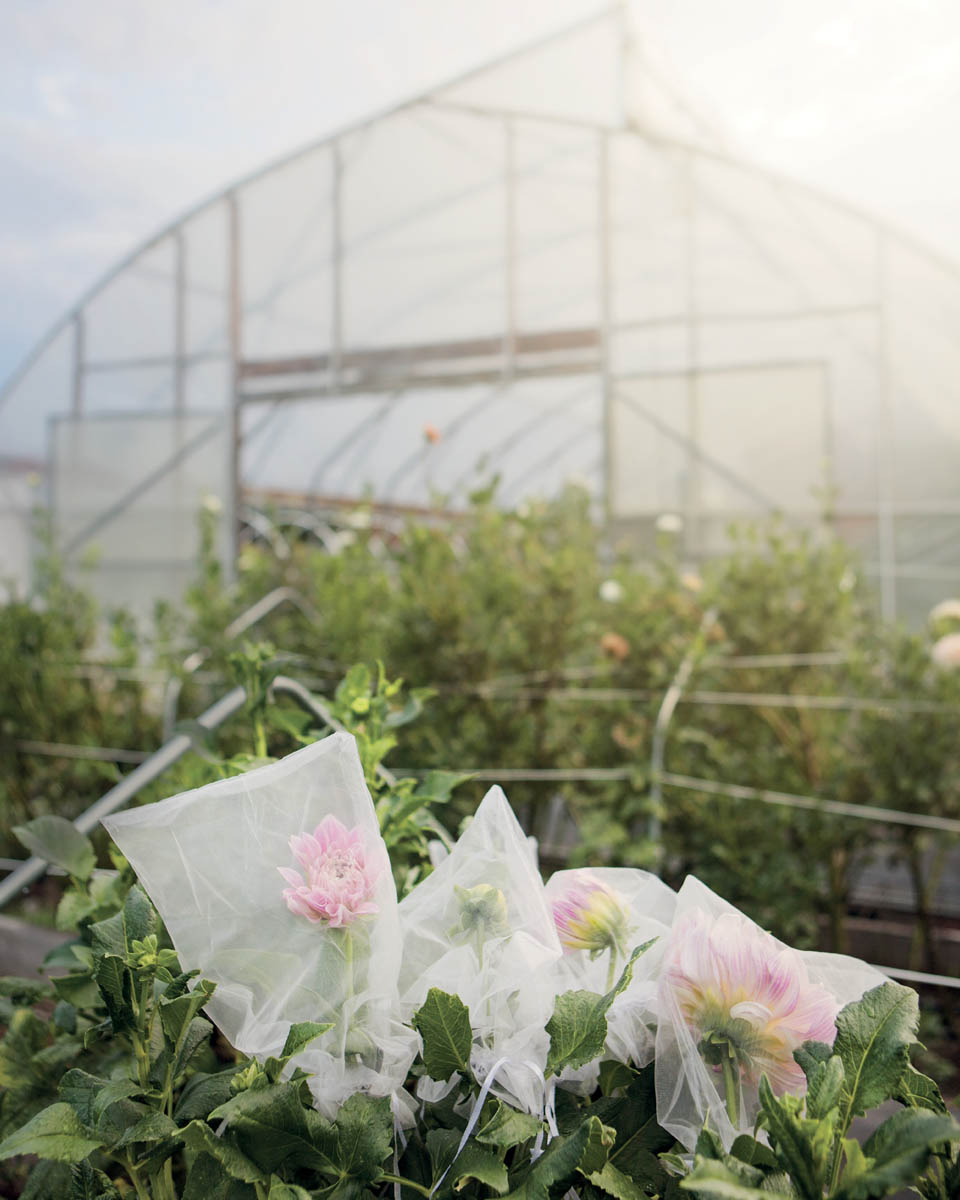
Urban Buds

Urban Buds
Many people dream of starting a farm. If you ask them “Why a farm?” you will get a wide variety of responses. And if you ask “What kind of farm?” the answers will cover a range of possibilities. Some people describe their dream farm in great detail, and others describe it in broad strokes. This is hardly surprising: there are probably as many types of farms and farm businesses as there are unique personalities.
Yet across these diverse dreams and possibilities, there are basic principles that apply in every situation. Operating a farm business requires managing dreams, crops, people, markets, money, and reality.
How to manage all six of those — individually, then together — is the subject of this book. In the following chapters, we lead aspiring and beginning farmers through the basics of how to start and manage a successful farm business. In the process, we blend advice and inspiration from experienced farmers with guidance from agricultural educators. The farmers we work with, like those who are the focus of this book, operate small to medium-sized farms that use sustainable and organic methods, and they sell their products through local and regional markets.
What do we mean by “aspiring and beginning farmers”? This book is intended for people who are thinking of starting a farm business (particularly a small farm), those within their first decade of farming, and others who are not beginners but are considering major changes to their farm business. If you do not fit into any of these categories, this book is still a rich resource, with information you can adapt to any farming situation. If you are not planning to have your own farm and would rather be a farm manager for someone else, this book is also for you.
Where you are in this whole process will determine how you use this book. If you are not farming yet and are in the early stages of imagining your farm, it will be useful to go through the chapters in order. At the other end of the spectrum, if you are an experienced farmer, you might start with the table of contents, scanning for information relevant to your particular situation and the questions you have. One thing we have learned from farmers over the years is that their readiness for absorbing different types of information depends on what stage of farm business development they are in. (More on that later.)

This book is based on a course developed specifically for beginning farmers. The course, Growing Farms: Successful Whole Farm Management, has been taught for the past 10 years in various locations throughout the state of Oregon and is now available online to reach a wider audience. In recent years, more and more people have been drawn to farming as a career that allows them to combine their occupational and personal life goals. In the Growing Farms course, and in this book, we share valuable information and experiences that can help you get started farming, grow your farm business, and keep on farming into the future.
We have been at this long enough, however, to know starting and managing a farm is not easy, and many farms (like many small businesses) do not succeed. Farming is challenging, complicated, and sometimes deeply frustrating — both as a business and as a way of life. Some of the hardest things about farming are beyond a farmer’s direct control, such as the high price and limited availability of appropriate farmland, tough marketplace competition, and thin profit margins. Having a clear-eyed perspective about these realities is an important part of managing your farm business. In fact, after reading this book, you might decide not to pursue farming — a positive step that may spare you hardships.

bottom left: Mimo Davis and son, August, make the rounds at Urban Buds farm.
This book is not about how to grow specific crops or raise livestock (although we review the natural processes associated with farming). It is about how to grow a farm — the basic principles of starting and managing a farm business. As such, it is a great place to start for aspiring and beginning farmers or any farmer implementing changes on his or her farm.
Our discussion is grounded in three central ideas:
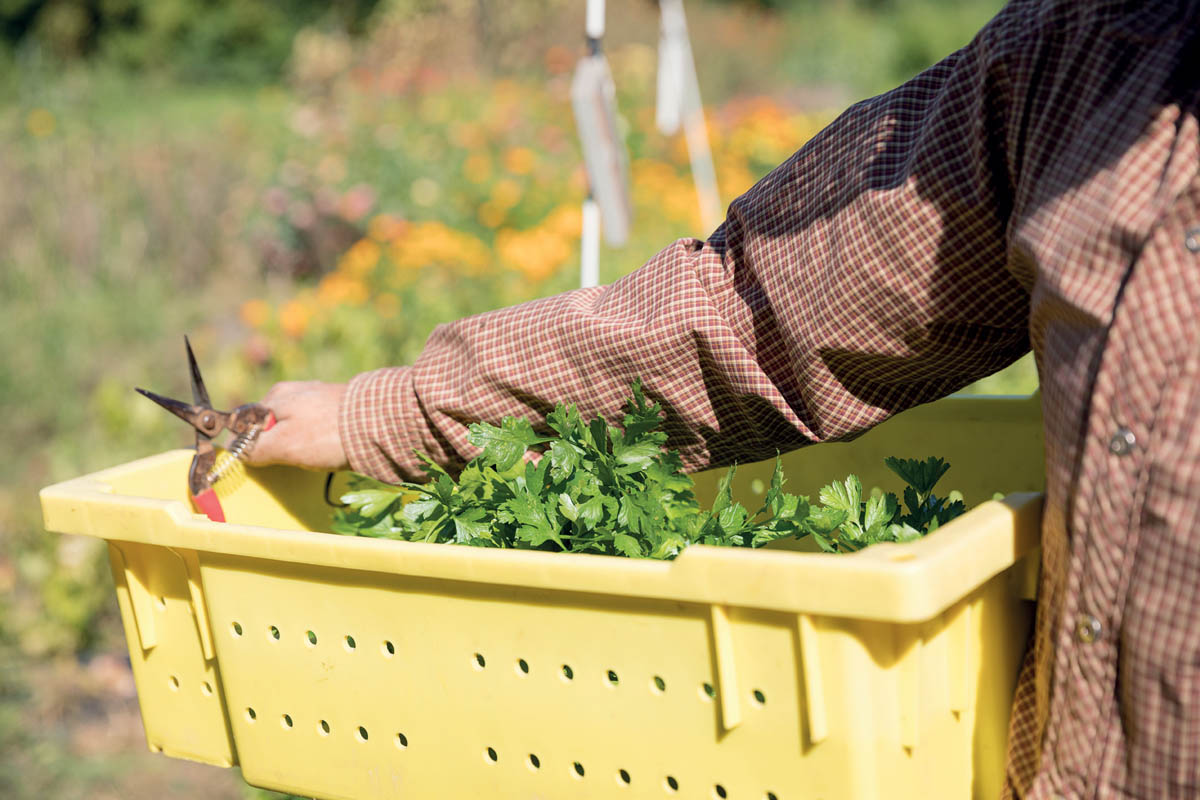
Whole farm management is a holistic and progressive approach to farm management. The basic premise is that you can make better decisions when you look at the whole farm. From this perspective, farmers take into account all the different components within the farm system and how they interact:
Managing the farm includes an awareness of all the connections between the farm’s internal and external components. Decisions in one part of the farm affect other parts of the farm directly or indirectly. This dynamic plays out in pragmatic issues, such as matching the correct size main line pipe to an irrigation pump so all the peppers can be irrigated during a hot spell right after planting.
“You can’t know it all at once. Growing is where it starts. You have to know you can grow something before you can figure out how to sell it. But once you grow it, you have to figure out how to market. And once you’ve sold a few things, then you’re in a position to ask: Can I afford to keep doing this?”
— Small-scale grain farmer, Oregon
|
Stage |
Years |
Description |
What Farmers Said at each stage |
|
1 |
1 to 3 |
Proving we can grow and sell: basic farm and crop management and marketing |
“We didn’t know enough to know how much we didn’t know.” “I skipped the business planning part and just started growing things.” |
|
2 |
3 and 4 |
More deliberate, less frantic: ease the burden, invest in and fine-tune infrastructure and marketing |
“We are farmers now.” “I have to be bent over for 21⁄2 hours straight?” |
|
3 |
4 to 6 |
How to make money: focus on business management |
“We were excited to grow and sell . . . then we started to look at the numbers.” “How do we scale up profitably without burnout?” |
|
4 |
5 to 7+ |
Big-picture thinking: “We can do it. Should we still?” |
“This is going to evolve . . . may need to try a couple of times.” “Year 5 was a breakthrough, balancing the stresses of what we’re trying to do.” |
It also plays out in market and production issues. For example, if you plan to increase production to meet market demand, it is crucial to consider the impact on other parts of the farm system — the whole farm. Will increasing production lead to overgrazing pastures? Will it shorten rotations and intensify vegetable pest management and soil health problems? Does the farm have the capacity in terms of processing, wash and pack, cooler space, labor, and other infrastructure to support increasing production? If the answers are no, then there could be profound negative effects on the farm’s long-term productivity. If the answers are yes, then the whole farm is ready, and increasing production will benefit the whole farm.
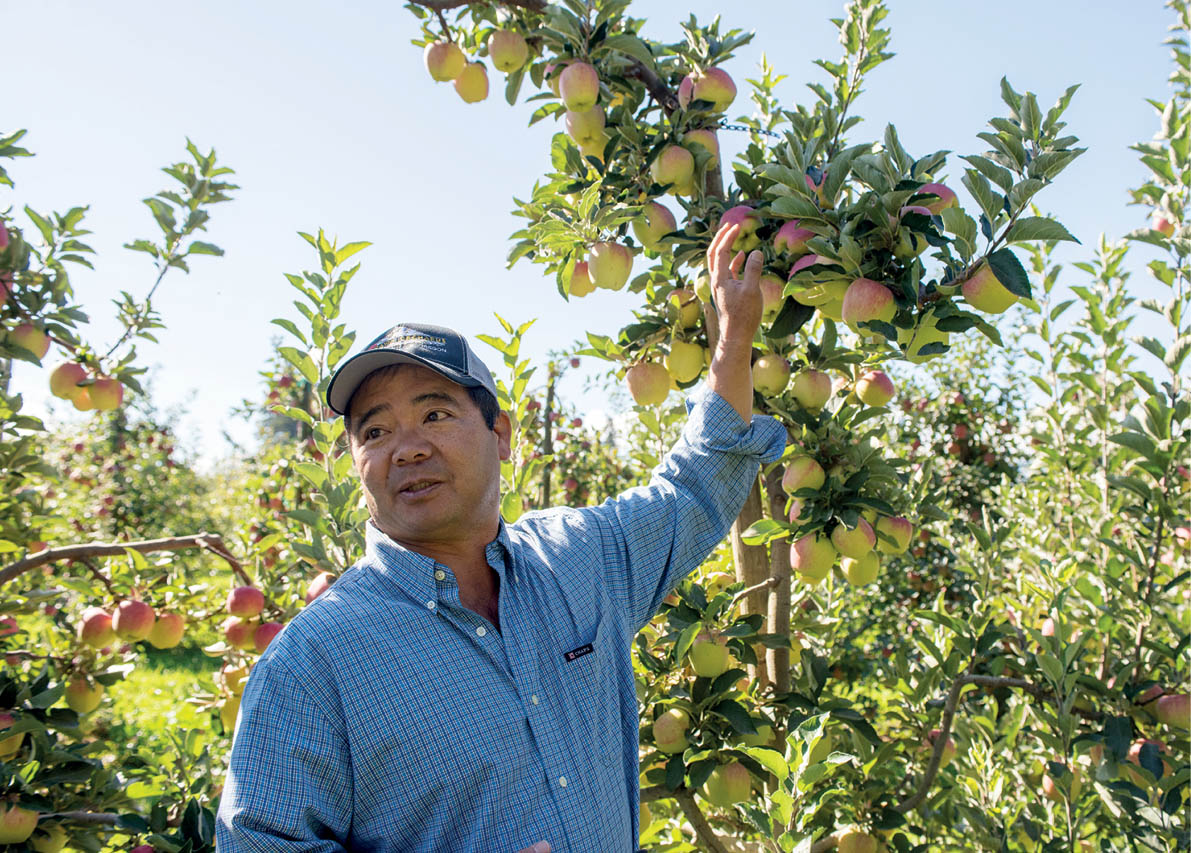
Randy Kiyokawa gives a tour of Kiyokawa Family Orchards.
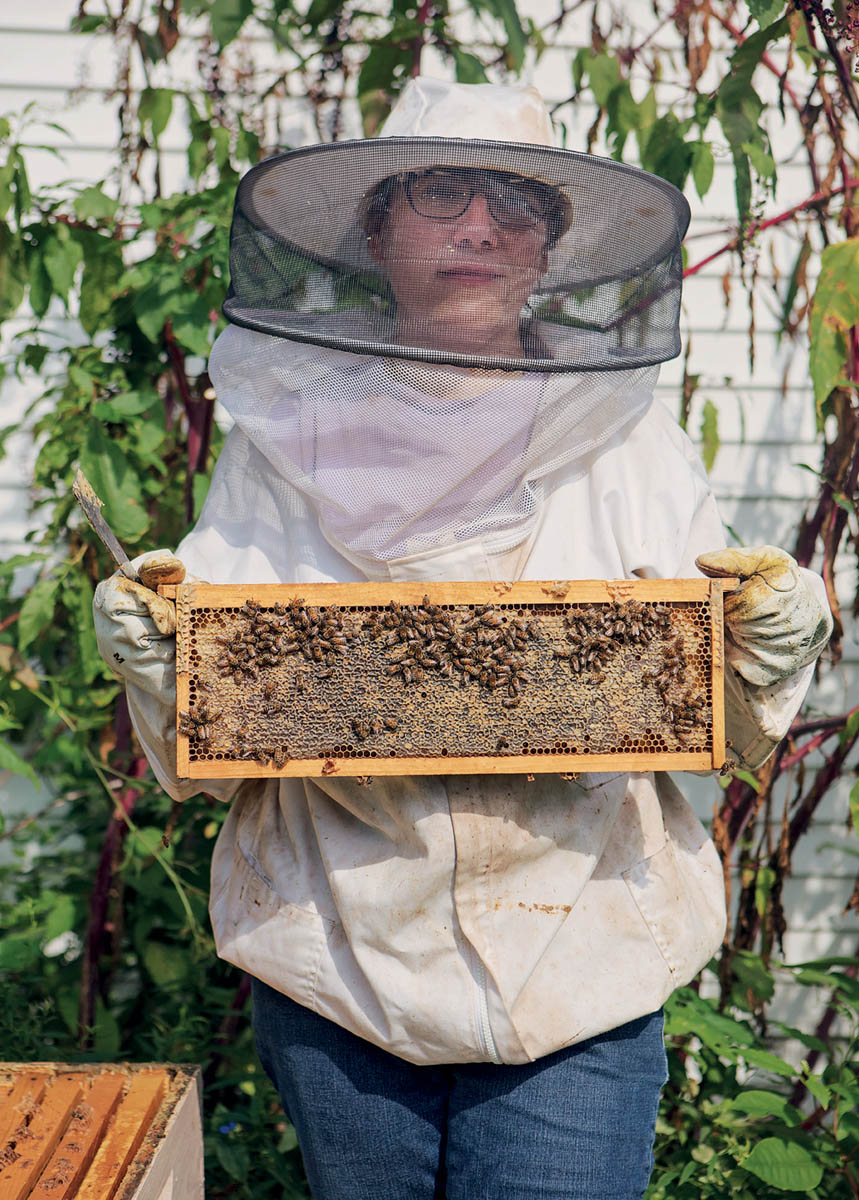
Miranda Duschack works with the beehives at Urban Buzz, an enterprise of Urban Buds.
We have been working with beginning farmers and ranchers for more than 20 years. Training new farmers and helping them launch their businesses has long been a national priority, and both federal and state public agencies have dedicated programs and funding to make this happen. Yet, even with a successful start, we also see many beginning farmers decide to leave farming within their first 10 years.
Certainly, this is true for many career paths: even when people are successful in a career, many decide to change direction and do something new. From our research, we have learned that farmers and their farm businesses tend to move through four fairly predictable stages of development during those first 10 (or so) years. This matters because farmers are “ready” for different information at different times. Education and training programs need to meet new farmers where they are on their path.
How do we know this? After so many years of working with farmers, we decided to step back and study how farmers develop over time. We engaged with experienced and beginning farmers over the course of three years (with surveys, focus groups, and interviews). When we analyzed all of the data, we found a clear pattern (see Beginning Farmer Stages of Development table). Farmers vary in how many years they spend at each stage, but they go through the stages in order.
As they pass through these stages, farmers confront how to produce crops, assess markets, plan and improve infrastructure, hire and manage labor, establish and use increasingly complex accounting systems, balance family and farm demands, and much more. Again, their need for information and training on these topics is to a large degree determined by their stage of development as farmers and business operators.
Why all of this matters. Beginning farmers and ranchers cannot learn everything immediately, do not always know what they need to know (as they themselves have reflected years later), and are motivated to find information and training when they encounter specific questions and challenges related to their particular stage of development. As you go through this book, you will probably absorb some parts and skim others. The beauty of having this book is that you can come back later, when you are ready for the parts you did not or could not use immediately.

Anton Shannon and Rocco the dog lead the team to work at Good Work Farm.
We have observed that new farmers are often overly confident about what they think they know and what they can do, and that this attitude shifts as they gain more experience. This is simply worth keeping in mind. Initial overconfidence may even be an advantage in charging up the steep learning curve.
For example, a farmer in his tenth year of farming told us that when he first took our course Growing Farms, he felt confident about what he needed to know and ignored the rest. It was only after several years’ farming that he realized what he had missed and wished he had listened to all of it.
Yet this is exactly our point: He simply wasn’t ready to learn certain things until he had been farming for a few years. Only then did he have a framework to absorb and use that information. Now he is even more open and ready for new ideas, knowledge, and skills. “I am astonished every day at how much more I need to learn. People who come at farming from something else . . . learning what you have to learn . . . it does not end,” he said.
We know that small farms provide an opportunity to design a business that is fulfilling and consistent with the goals of the farmers. Often, the conventional wisdom is that all businesses, including farm businesses, define success only in economic terms based on continuous growth. However, our research has revealed that although financial success is vital to small farmers, they are pursuing farming as more than just a way of making a living.
We learned from farmers that their visions of success reflect a variety of objectives they had incorporated into their farm businesses. Many develop their farms as a form of activism to facilitate social change or as an instrument to create a desired lifestyle or personal accomplishment. Farmers expressed the role of their farms as developing community; enhancing rural economies; supplying local, sustainable food; and preserving farm landscapes, genetics, and knowledge. Their comments clustered into four elements for defining success:
As you plan your farm, consider how these ways of defining success fit with your vision.
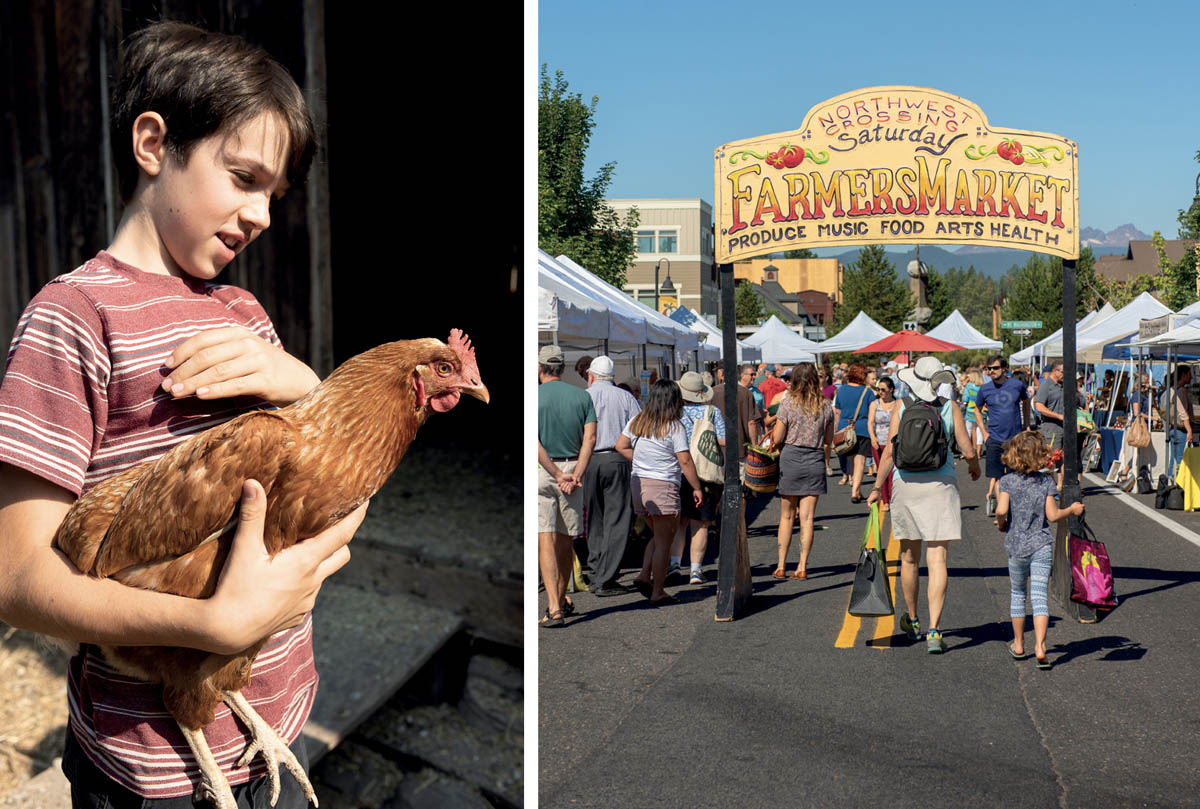
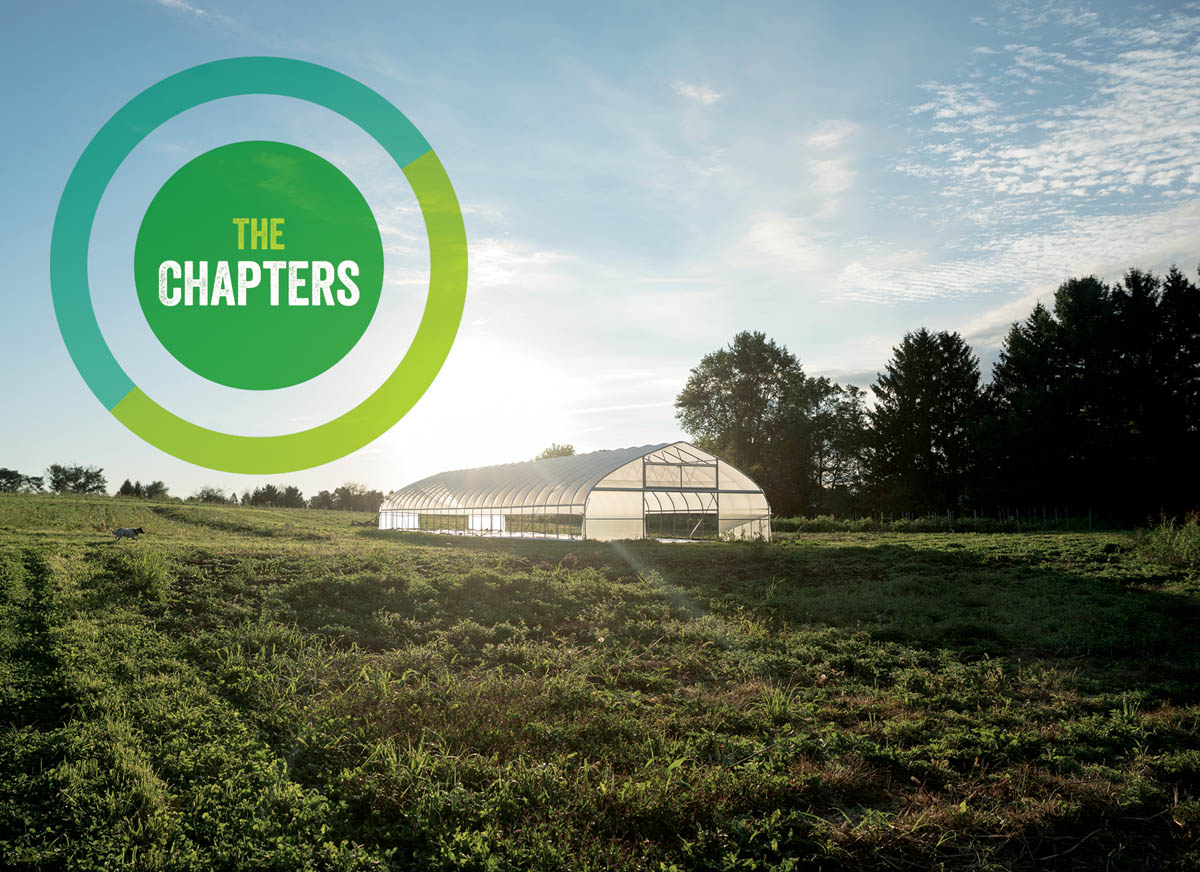
In this chapter, you will consider the values that you bring to the business, build a vision and mission for your ideal farm, and create a foundation to move forward by setting some goals. As part of that exploration, you will begin to assess your farm business: the natural resources of your property that influence your choices about what to grow and produce, as well as the human resources — the personalities and skills of the people who will form your farm team. If you do not yet own or lease a farm, this chapter is a first step in organizing your thoughts around what you need or want in a farm before you buy — such as soils, water, and climate — and in beginning to create a plan for your future farm business.
This chapter is designed to help you think through the aspects of your farm that make it work for you and help you reach your goals. To use a computer analogy, it’s about both the hardware (equipment and infrastructure) and software (people and processes) that make your farm run well. “Do It” will help you develop a holistic view of your farm operations and how to put resources to work: the practical aspects of equipment and infrastructure, irrigation, labor management, and farm energy.
This chapter is based on the idea that before deciding what you want to grow on your farm, you need to know if and how you can sell it. You will be introduced to some basic marketing concepts and learn about the most common marketing channels used by small farms in the United States. Your mission statement, vision and values, and the other assessments you worked on in “Dream It” will play a major role in developing your marketing strategy.
Sound business management is essential to the success of your small farm business. Business management does not need to be intimidating or overly complicated. With some training and practice, all farmers can adopt successful business management practices. The purpose of this chapter is to help you get started in this learning process.
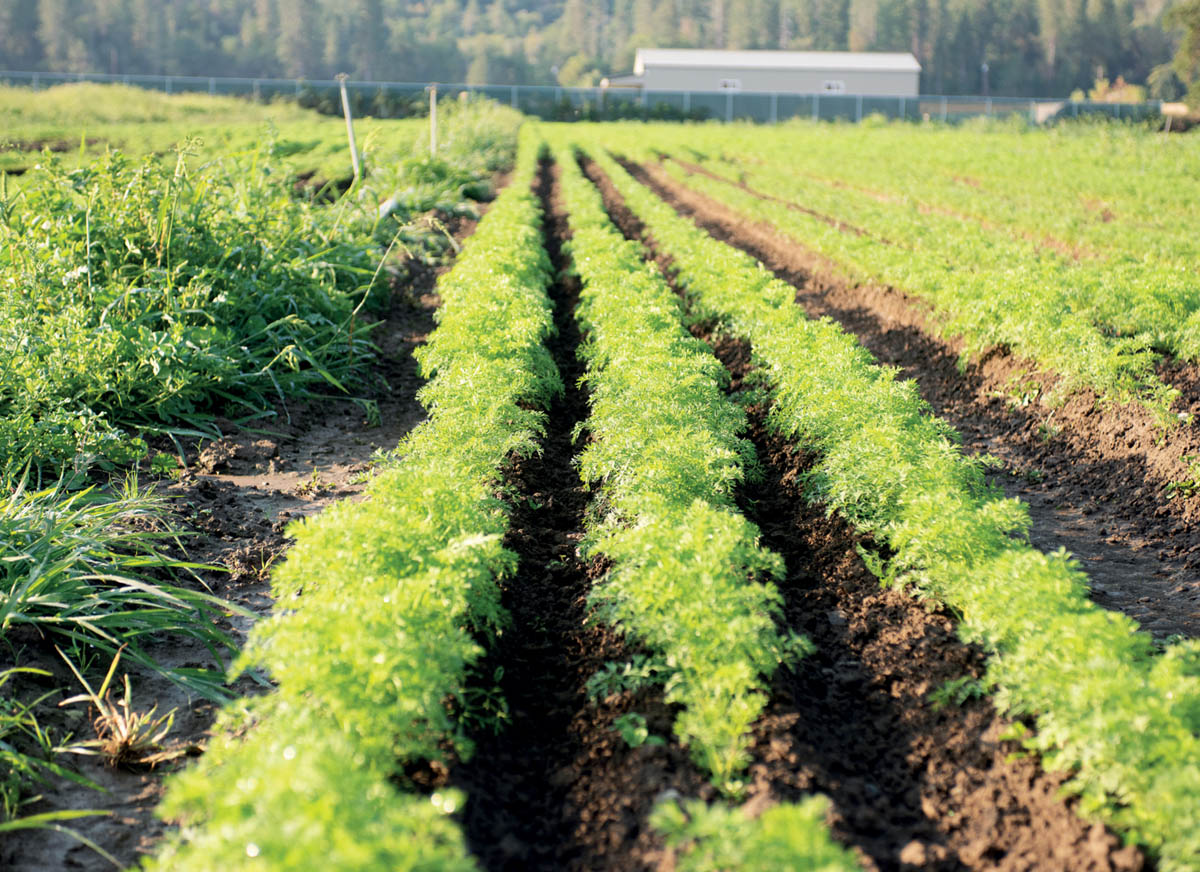
“Grow It” is about the work of managing your land and resources as a farm ecosystem to produce crops and livestock. Given the diversity of farmers and ranchers and regional and climate variations, our goal is to introduce the physical and natural cycles that are linked to the basic principles and practices of sustainable agriculture. The chapter is not about how to grow specific crops; instead, it provides guidance that cuts across all types of farming systems — annual crops, perennial crops, and grass-based livestock systems.
Now that you have a farm business, how do you keep it going for the long haul? There are challenges to operating any small business, and farms are no exception. Some might say that farm businesses are even more challenging given the number of variables that you have to deal with in producing, marketing, and selling your product, including your role as an entrepreneur, the major roles in a family business that will contribute to your satisfaction, the long-term success of the business, succession and estate planning, and more.
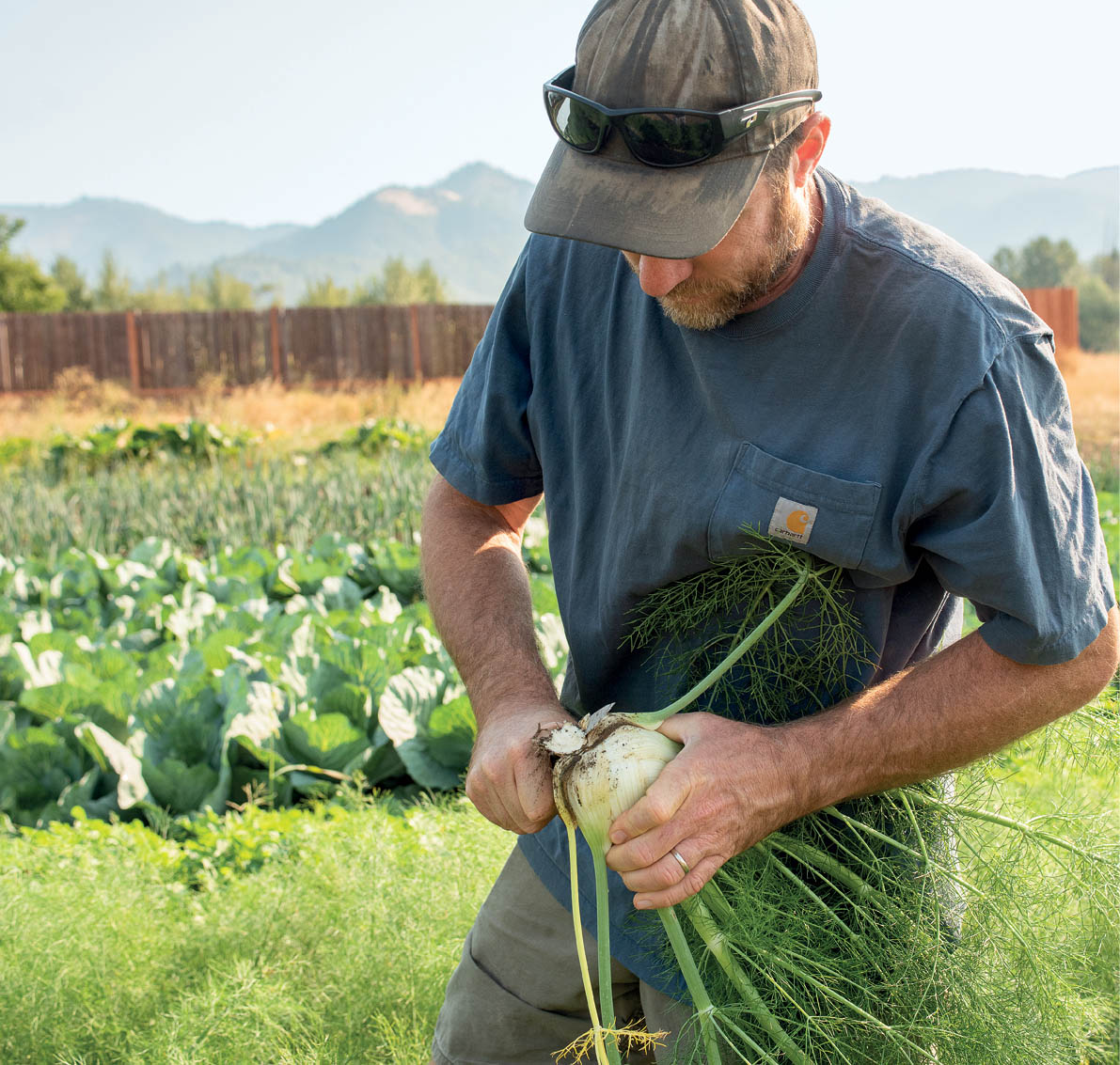
The 16 farmers featured in this book represent 9 farms from across the United States, producing a variety of crop and livestock products. Their experience covers a wide range of production systems, business models, and environments, and includes new start-up farms as well as multigeneration farms. As you will discover, each has a unique story in terms of how he or she has developed the farm business.
As you learn from them, keep in mind that their comments are from the moment in time when we interviewed them. These snapshots provide a rich picture of the challenges and rewards of starting a farm business. All the farmers included here continue to evolve and adapt with changing circumstances — developing new approaches to farming, changing the size of the farm, and finding new markets. One of them has transitioned out of farming, while another has developed a farming consulting business. Throughout this book, you will learn about how they got started and what drives them. Here is a quick introduction:
Blue Fox Farm, Applegate Valley near Applegate, Oregon. Operators: Melanie Kuegler and Chris Jagger. Products: organic vegetables. Size: 67 acres. See profile.

Goodfoot Farm, Kings Valley in the Coast Range near Philomath, Oregon. Operators: Beth Hoinacki and Adam Ryan. Products: organic and biodynamic vegetables and blueberries. Size: 10 acres. See profile.
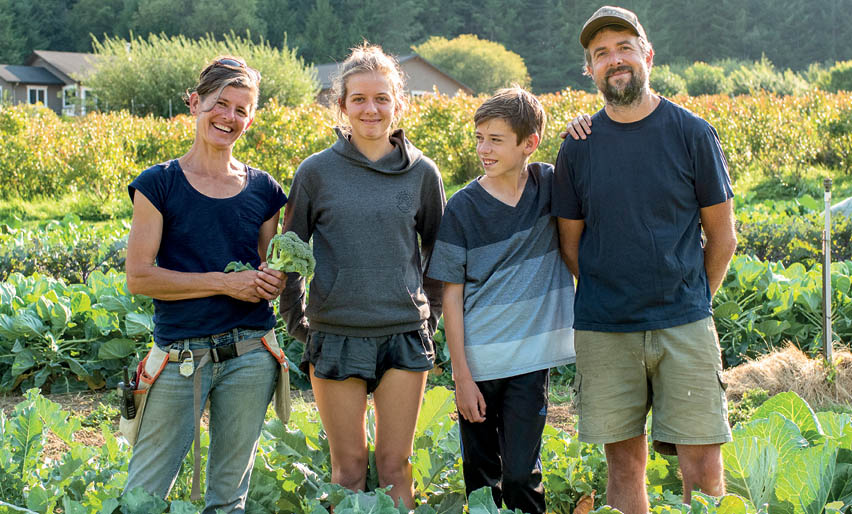
Good Work Farm, Lehigh Valley near Nazareth, Pennsylvania. Operators: Lisa Miskelly and Anton Shannon. Products: vegetables, fruits, and flowers from horsepower. Size: 14 acres. See profile.
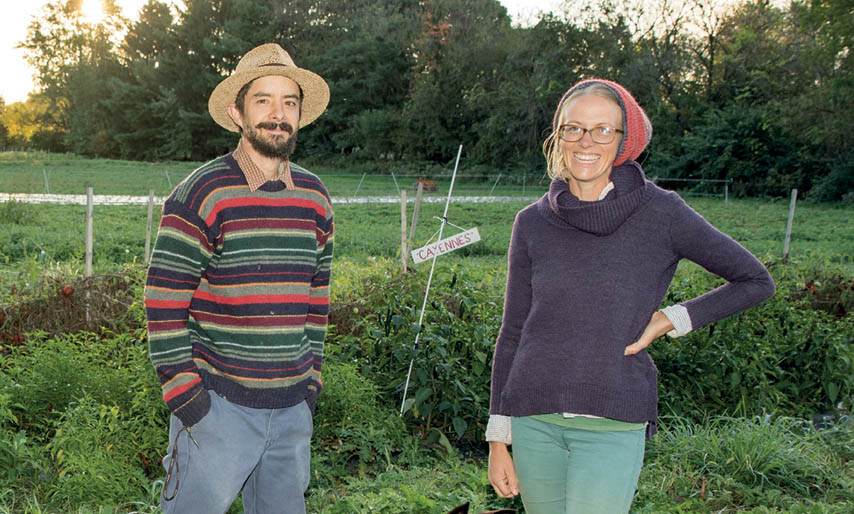
Kiyokawa Family Orchards, Hood River Valley near Parkdale, Oregon. Operator: Randy Kiyokawa. Products: apples, pears, peaches, cherries, plums, pluots, and pluerries. Size: 207 acres. See profile.

Rainshadow Organics, in the high desert near Terrebonne, Oregon. Operators: Sarahlee Lawrence and Ashanti Samuels. Products: organic vegetables, grains, and livestock. Size: 130 acres. See profile.
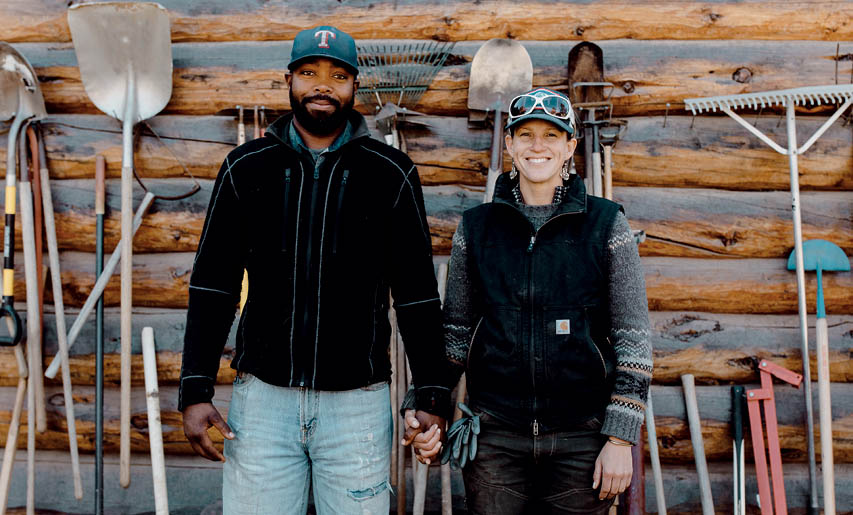
Slow Hand Farm, Sauvie Island, just outside of Portland, Oregon. Operator: Josh Volk. Products: organic vegetables. Size: 1⁄4 acre. See profile.

Sweet Home Farms, foothills of the Cascade Mountains near Sweet Home, Oregon. Operators: Carla Green and Mike Polen. Products: grass-based beef, lamb, goat, and pork, and pastured poultry. Size: 82 acres. See profile.
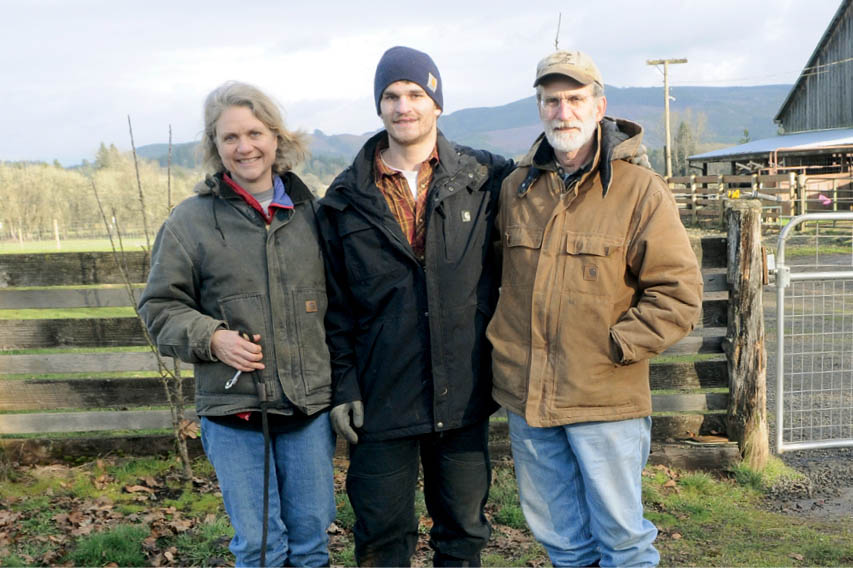
Urban Buds: City Grown Flowers, in the heart of downtown St. Louis, Missouri. Operators: Karen “Mimo” Davis and Miranda Duschack. Products: 70 varieties of cut flowers and honey. Size: 1 acre. See profile.
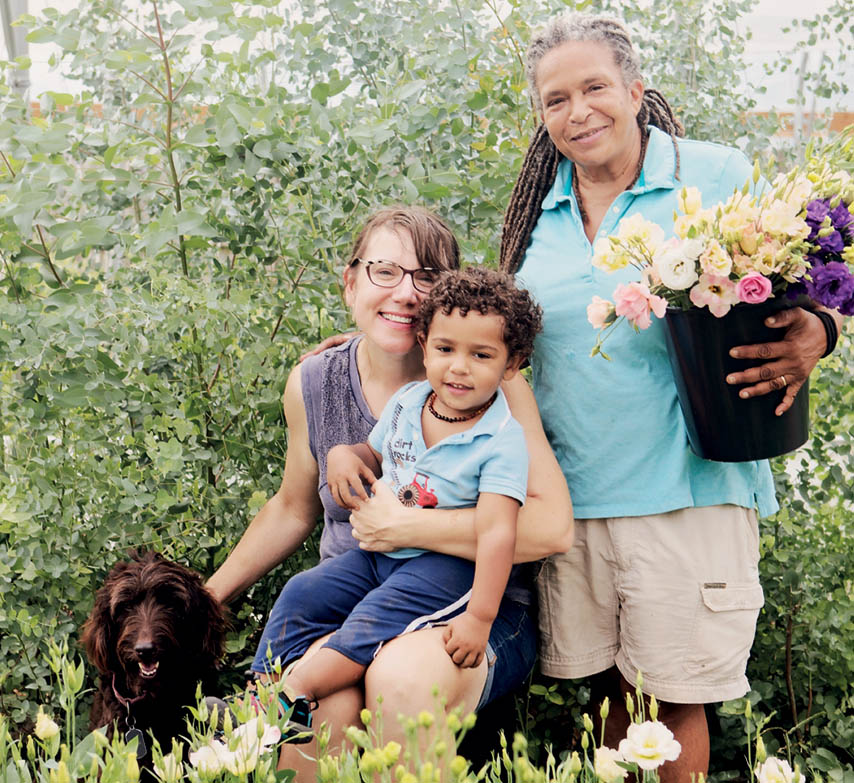
Vanguard Ranch, near Gordonsville, Virginia. Operators: Renard and Chinette Turner. Products: goat meat and goat meat value-added items. Size: 94 acres. See profile.
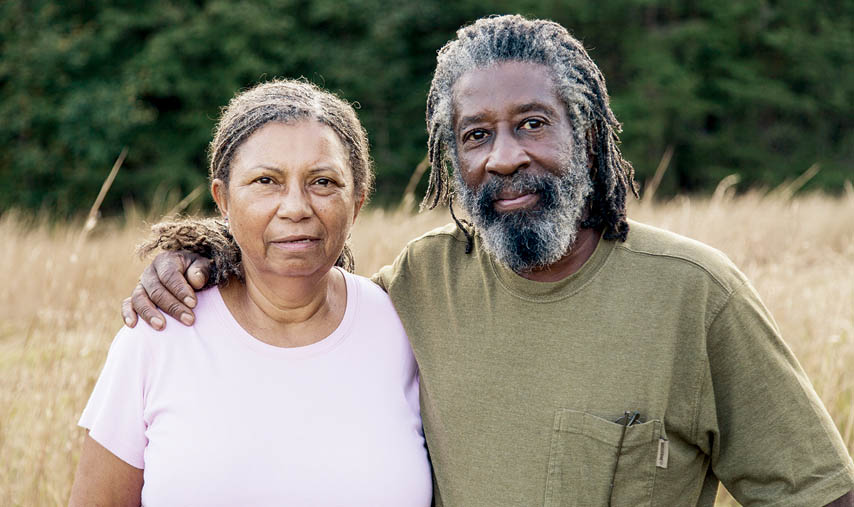
Lastly, the 12 authors have drawn from their broad farming and professional experience to write this book. Together with the farmers listed here, we guide you to dream, do, sell, manage, grow, and keep your farm.